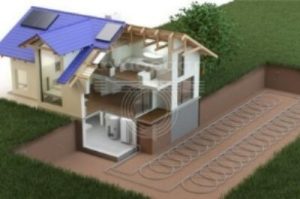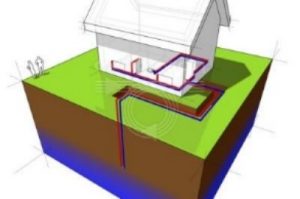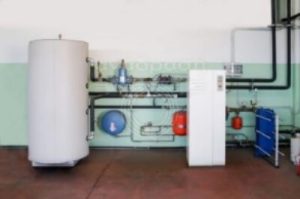Geothermal energy is mild and renewable energy source, which due to its minimal, if not zero, environmental footprint can contribute greatly to energy autonomy and consequently to energy security of a state.
Geothermal energy is divided into four categories depending on the temperature of the geothermal field:
- Shallow geothermal (<25˚C): It is almost everywhere and is mainly used for cooling and heating.
- Low enthalpy (25-90˚C)
- Average enthalpy (90-150˚C): It is used for both power generation and direct thermal uses.
- High enthalpy (>150˚C): It is mainly used for power generation due to its high energy.
Greece, due to the appropriate geological conditions, has rich geothermal potential and is considered one of the most favored countries worldwide. To date, geothermal fields have been identified in 30 areas throughout the country that can be exploited for direct uses, with a mild environmental footprint, and cover a range of energy needs:
- heating fish farms
- greenhouse crops
- drying of agricultural products
- heating and cooling homes, schools and hospitals
- water desalination
- operation of spa facilities
They can also play a decisive role in the energy autonomy of the regions in various productive sectors: in the primary sector, by reducing energy costs in agriculture and fish farming, in manufacturing as well as in heating homes, schools and hospitals.
The advantages of high enthalpy geothermal energy are:
- The continuous supply of energy
- Small space requirement
- Low operating costs
- Zero to minimal gas emissions
Areas of geothermal interest in Greece:
The research maps the islands of Milos and Nisyros as confirmed fields of national interest. As confirmed fields of local interest, the mapping records dozens of points throughout Greece with the highest density observed in eastern and central Greece and the Aegean. Fields of national and local interest are recorded in Santorini, Chios, Lesbos, Samothraki, the sedimentary basins of Central and Eastern Macedonia up to the Evros.
Minstallation methods:
There are three basic methods of installing the geothermal heat exchanger:
Approximately 2m deep trenches are dug or the site is completely excavated and the geothermal exchanger is installed. It is used almost exclusively when there is sufficient plot space because it is the most economical solution.

Drilling holes are made at relatively small depths and pipes are inserted that make up the geothermal exchanger. It is used in cases where the surface of the plot is small and the 1st method cannot be applied.

The water is pumped from the aquifer, passes through the heat pump where it absorbs or gives off heat and is then reintroduced into the earth. This system is indicated in areas with shallow water table depth. Its main advantage is the minimal space requirements on the plot.


